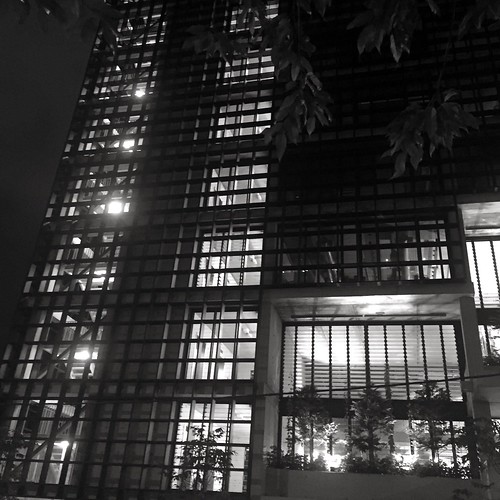Phosphorylation on Plin1ser492 precedes CLD cluster dispersion. (A) Consultant photographs of Plin1 cells immunostained for Plin1 (red) and HLCL-61 (hydrochloride) distributor phosphorylated Plin1ser492 (phospho-Plin1S492, inexperienced) following stimulation for the indicated times with 10 mg/ml isoproterenol. Hoechst-stained nuclei are shown in blue. The measurement bar is ten mm. (B) The time classes of CLD dispersion (blue line) and phosphorylation of Plin1S492 (pink line). CLD dispersion is revealed as the fraction of the whole amount of Plin1 objects/cell observed at 45 minutes. The extent of Plin1S492 phosphorylation is revealed as a relative ratio of phospho-Plin1ser492 fluorescence to overall Plin1 fluorescence. The values are indicate six SEM for 6 experiments with the analysis of 6000 cells for each time point in each and every experiment. Statistical significances of Plin1 phosphorylation are indicated by decrease case letters a and b: a, values vary from the moment value (p,.001) b, values vary from minutes price (p,.01) but not from one or 5 minute time position values. A 1-way ANOVA of Plin1 objects/cell yields a p,.0001 and R2 = .7507, a put up check for linear traits was statistically good with p = .0207.
Ezrin and moesin, customers of the ezrinradixin-moesin (ERM) family of actin-connected proteins, are implicated in the management of cortical actin capabilities [33], and both proteins are described to be important for secure microtubule formation [34,35]. Therefore, we sought to determine if ERM proteins perform a part in Plin1-CLD clustering and/or dispersion by blocking expression of ezrin or moesin using validated siRNA oligonucleotides. In Plin1 cells transfected with scrambled oligonucleotides, ezrin and moesin were immunolocalized near the plasma membrane and inside the cytoplasm as envisioned (Determine 7A, eco-friendly fluorescence). Transfection with scrambled oligonucleotides did not impact CLD clustering or interfere with isoproterenol-stimulated CLD dispersion. Forty-8 hours subsequent transfection with their respective siRNA oligonucleotides, we have been unable to detect ezrin or moesin by immunostaining (Determine 7A), suggesting that their stages ended up drastically depleted by this time. Inhibiting ezrin expression did not influence CLD8864696 clustering or interfere  with CLD dispersion adhering to isoproterenol stimulation (Determine 7C). By distinction, below management problems, inhibiting moesin expression disrupted the tightly clustered CLD morphology producing important shifts in the variety of cells with a number of little-cluster (Stage2) CLD morphology (Determine 7A). The results of moesin knockdown on cluster dispersion qualities were quantified employing both morphological and Plin1 objects/cell techniques. In the absence of isoproterenol, the number of Plin1 objects/cell enhanced from about two.five in cultures transfected with scrambled siRNA to close to 8 in cultures transfected with moesin siRNA (Figure 7B), which is steady with partial disruption of Stage one clusters. Using the morphological assay, we identified a important increase (p,.001) in the portion of CLD in Levels two and 3 in moesin siRNA-transfected cultures compared to scrambled siRNA transfected cultures beneath control circumstances (Determine 7D). Nevertheless, moesin knockdown did not substantially affect the number of Plin1 objects/cell (Figure 7B), or change formation of Phase 3 CLD in cells taken care of with isoproterenol (Figure 7D). These outcomes point out that moesin contributes to development of CLD clusters but it does not look to be concerned in their dispersion.
with CLD dispersion adhering to isoproterenol stimulation (Determine 7C). By distinction, below management problems, inhibiting moesin expression disrupted the tightly clustered CLD morphology producing important shifts in the variety of cells with a number of little-cluster (Stage2) CLD morphology (Determine 7A). The results of moesin knockdown on cluster dispersion qualities were quantified employing both morphological and Plin1 objects/cell techniques. In the absence of isoproterenol, the number of Plin1 objects/cell enhanced from about two.five in cultures transfected with scrambled siRNA to close to 8 in cultures transfected with moesin siRNA (Figure 7B), which is steady with partial disruption of Stage one clusters. Using the morphological assay, we identified a important increase (p,.001) in the portion of CLD in Levels two and 3 in moesin siRNA-transfected cultures compared to scrambled siRNA transfected cultures beneath control circumstances (Determine 7D). Nevertheless, moesin knockdown did not substantially affect the number of Plin1 objects/cell (Figure 7B), or change formation of Phase 3 CLD in cells taken care of with isoproterenol (Figure 7D). These outcomes point out that moesin contributes to development of CLD clusters but it does not look to be concerned in their dispersion.
